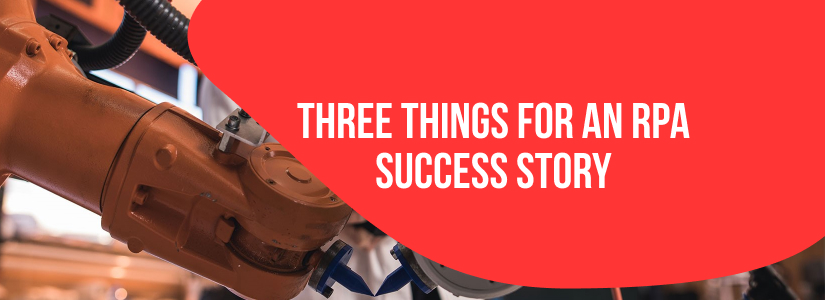RPA is a powerful technology. Here is how to make sure your RPA implementation is a success story for your company. Learn more.
You might have already heard from many that Robotic Process Automation (RPA) is a transformational technology. Understanding and seeing the value that RPA provides for business is more natural than any other technology.
RPA uses software based units called bots to perform repetitive tasks that are currently carried out by humans. RPA is more accessible to implement for any company because we can run this software right from a single machine to clusters of computers for your company.
We closed 2018 with three big enterprise implementations of RPA to improve their business efficiency. We assessed the three major key factors that influenced these successful RPA implementations. Below are the results of our findings:
1 Design before building
Considering the nature of Robotic Process Automation (RPA), it is essential for us to design the end-to-end workflow of a particular task before we write a bot. We spent almost 35% of our time working closely with our customers understanding, developing and getting sign-offs on the processes that RPA would take over.
The end goal of a particular task has to be defined before we build the bots.
2 Proper Infrastructure Support
The infrastructure support is a crucial part of an RPA implementation. It is easy for companies to assume that the bots would do the job automatically once implemented. However, many forget to see the fact that these bots need a proper infrastructure to run on. Making sure the infrastructure is maintained, licenses are renewed beforehand, and the dependent platforms are running as expected is essential to achieve RPA Success.
3 Understanding where RPA can help
RPA cannot solve every problem in your organization. Clearly understanding the capabilities of RPA, knowing what to automate and what to use that is existing is essential. For example, when you are trying to automate a task in Excel, if a complex macro performs better than writing your own RPA script, then triggering a macro from an RPA platform is efficient than writing the same macro task in RPA bots.
With the factors above, organizations can have an excellent RPA success story. For more insights about RPA, read our RPA column at SvR: Skcript’s RPA Insights
Up next
Why we don't send holiday wishes to our customers Skcript
/svr/three-things-that-matter-for-an-rpa-success-story/
/svrmedia/heroes/rpa_success_factors.jpg
Skcript
/svr/three-things-that-matter-for-an-rpa-success-story/
/svrmedia/heroes/rpa_success_factors.jpg
